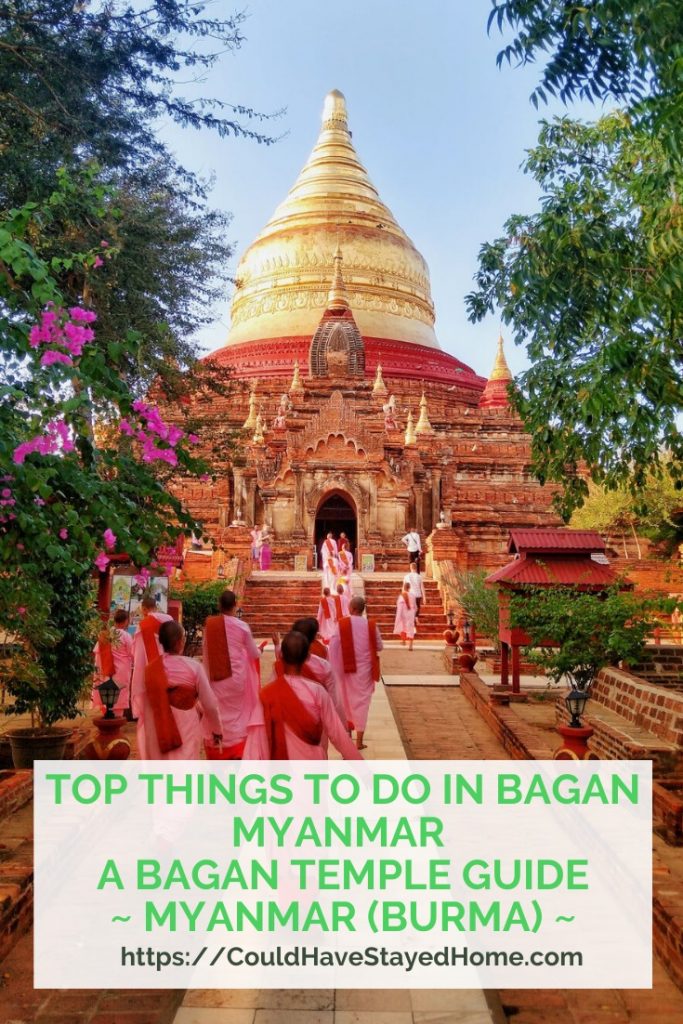Top Things to Do in Bagan Myanmar – A 2020 Bagan Temple Guide
Bagan is not only one of the most iconic sights in Myanmar, but in all South East Asia. More than 2,000 ancient temples scatter 26 sqm across Bagan’s countryside. This gives the intrepid traveller plenty to explore, although some visitors may feel daunted by the sheer number of temples. However, in this expert travel guide to Bagan, I’ll tell you all you need to know to make the most of your visit. This includes the best temples to see, how to travel around Bagan, accommodation, entrance fees and how to get there.
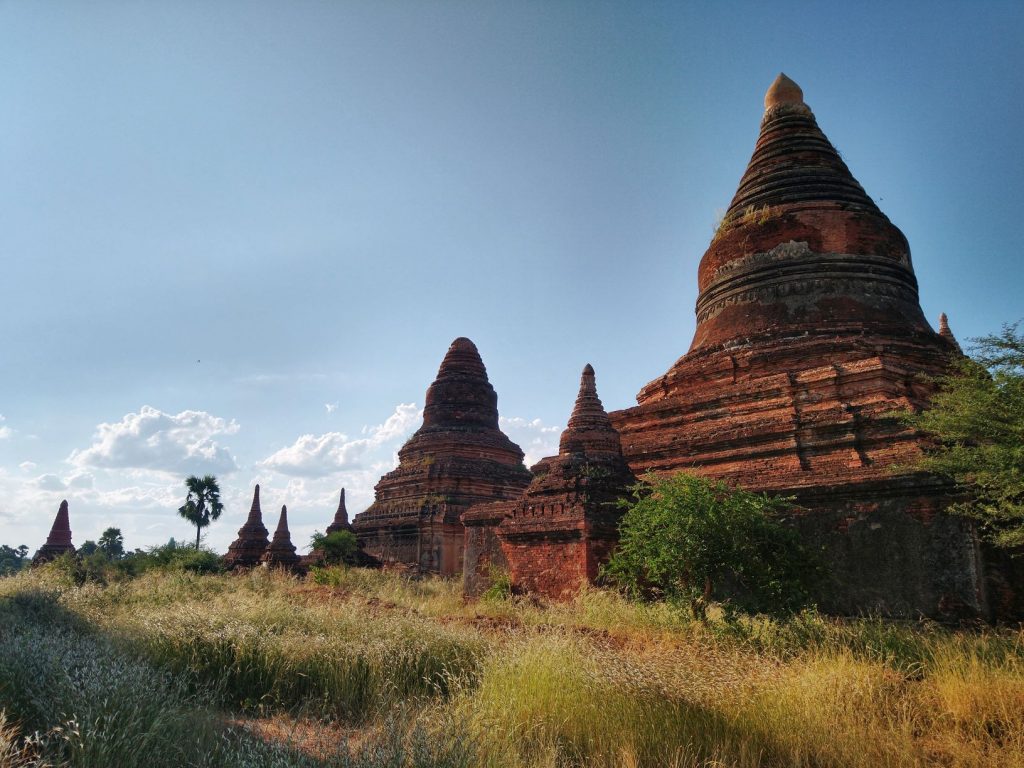
History of Bagan in Myanmar
Covering such a colossal area, Bagan has quite the history behind it. Originally called Bamar, the area held deep rooted Hindu and Mahayana Buddhist beliefs. That was until a monk came to visit; sent on a religious mission by Manuha, the King of Thaton (a town in the south of Myanmar). The King’s purpose was to convert the Bamar from Mahayana to Theravada Buddhism. The monk’s mission to convert the people of Bamar was a success. With strong belief in his new found faith, the King of Bamar requested that Manuha send him some Buddhist relics. The request fell on deaf ears, so the King of Bamar marched south with an army and took the relics for themselves. In the maelstrom that ensued, they even took the Manuha himself! The prestigious relics needed to be housed in a place fit for the Buddha himself. This led to building the temples of Bagan between the 11th and 13th century. In the ensuing years, many scholars have referred to Bagan as the first Burmese Empire. There is no known meaning of the word Bagan, but this famous Myanmar city was almost called Arimaddanapura. Whilst that might seem like a bit of a mouthful, it translated to ‘City of the Enemy Crusher’. This is of course the coolest name ever and a fitting title, given the history behind the formation of the city.
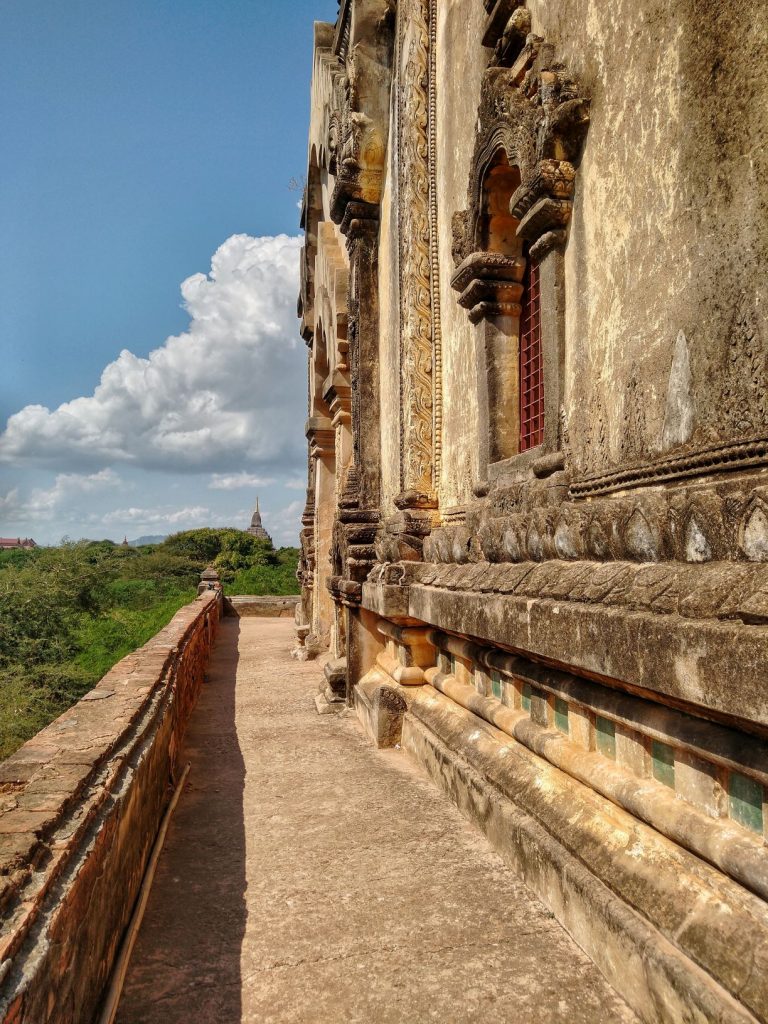
In the 13th century people abandoned Bagan and the city faded from glory. No-one is quite sure why. Speculation suggests this was due to a Mongol invasion or possibly concerns about growing threats from the Chinese. Subsequently Bagan fell in to disrepair and many of the temples crumbled. Something not helped by the 16 earthquakes which hit the area over the next eight centuries. (One of the worst earthquakes struck in 2016, causing severe damage to over 400 temples). In the late 19th Century, the British entered Myanmar (then called Burma) and started to develop a presence in the area. The redevelopment of Bagan became a priority as they tried to restore it to its former glory.
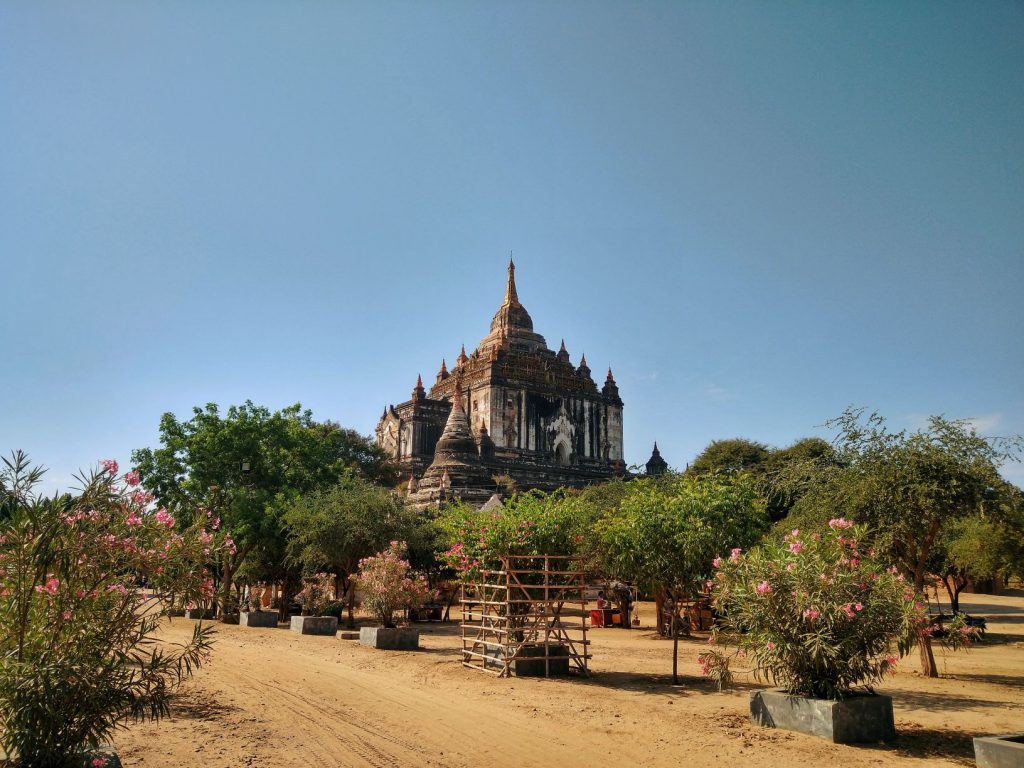
In 1996 Bagan was placed on the UNESCO World Heritage Tentative List. Although not a World Heritage Site, it does mean UNESCO keep a watchful eye on Bagan and provide funds to support its redevelopment. In 2020, work is still ongoing to preserve the temples. Many are reconstructed in a manner which gives an aged and weathered effect. Others look modern and out of place. Whatever views people have on the restoration, a gold star goes to Bagan for its recent ban on temple climbing. The internet is flooded with images taken from Bagan temple roofs, but as of late 2019, it’s no longer possible to do this. The ban will help preserve the temples of Bagan for years to come.
How to visit the temples of Bagan in Myanmar
Don’t feel overwhelmed about the sheer number of temples. Bagan is easy to explore independently without feeling daunted. Here I’ll tell you how to get the most out of your visit. For your convenience I have plotted the discussed temples sites on the map below. I also recommend you download the app Maps.Me (link) or Google Maps (link) for offline use. This enables you to use the map to navigate Bagan without an internet connection.
Tharabar Gate
The perfect place to start your day is with a visit to Tharabar Gate. Here you will see the walls to the city of Old Bagan and what at one time would have been its grand entrance. Locals allegedly pay their respects with blessings before passing through Tharbar Gate. During our visit, all they seemed to do was speed through it on mopeds.
Thatbyinnyu Temple
Next to Tharbar Gate is Thatbyinnyu Temple which makes a great introduction to the city. Built in 1144, it’s one of the best preserved temples and the tallest in Bagan, measuring 207 feet high. Inside you’re greeted by a giant Buddha statue for circumambulation. Walking in a clockwise direction (as is the tradition in all Buddhist temples), you’ll go through vast corridors and squeeze past golden Buddhist statues.
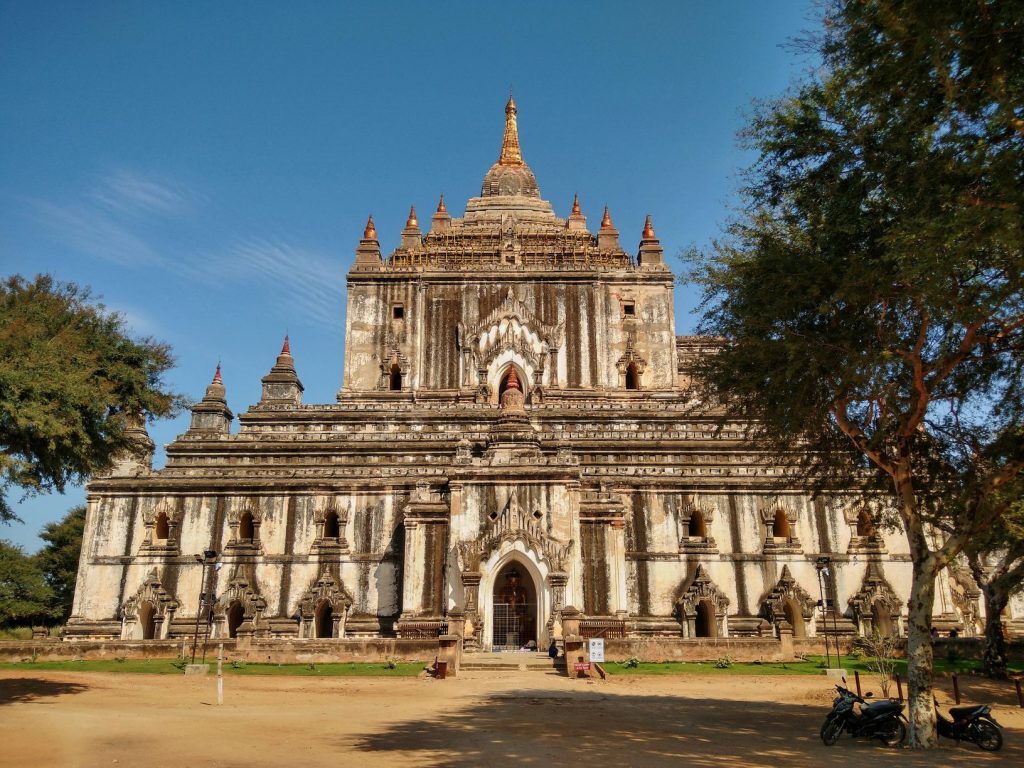
Nathlaung Kyaung Temple
Around the back of Thatbyinnyu Temple is Kathlaung Kyaung. This is the last remaining Hindu temple in Bagan and dedicated to Vishnu. It was originally used by the King to store non Buddhist imagery. Inside there are statues of Vishnu, along with great views looking back on to Thatbyinnyu.
Pahto Thamya
Behind Nathlaung Kyaung was one of my favourite ‘secret’ temples. I say secret, because it’s not widely visited. (You too will surely find some less discovered gems of your own around Bagan). Built sometime between the 10th – 11th century, Pahto Thamya looks like a corn cob. The design known as ‘Sikhara’. Inside, it’s mesmerising. From the intense heat and sun outside, your eyes suddenly have to adjust to the lack of light. What they reveal is a giant Buddha statue at the end of a long corridor. The sunshine piercing through the large doorway and illuminating its shape.
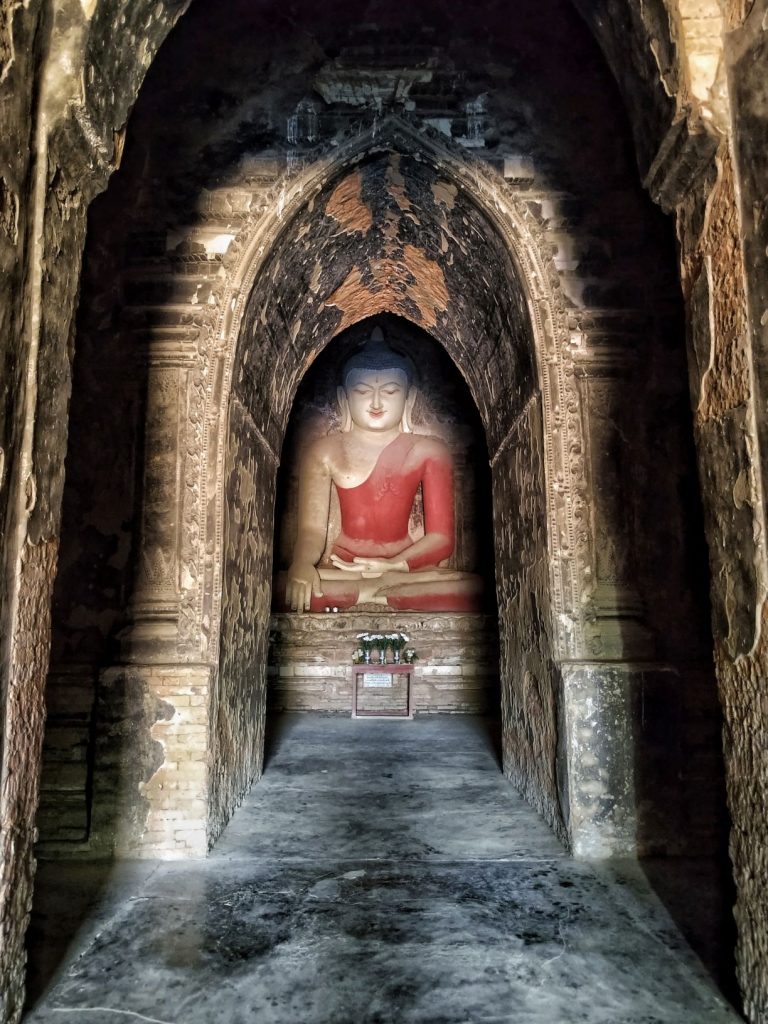
Paintings on the inside walls of Pahto Thamya depict ‘Buddhavamasa’, the Buddha’s life. To see them you’ll have to shine a torch and look carefully. A true explorer moment if ever there was one! Top Tip – Get to Pahto Thamya around 10:30AM when the sunlight hits the Buddha statue through the doorway.
Ananda Pahto
A short five minute walk away from Pahto Thamya is Ananda Pahto. It’s probably the grandest temple in Bagan. The reconstruction and clean white exterior giving it a modern feel. Inside, things are a little different. Dilapidated corridors, measuring 175 feet in length are adorned with four giant gold painted teak Buddhist statues. Each one marks North, South, East and West. They’re not to be missed and each stands at a colossal 31 feet high.
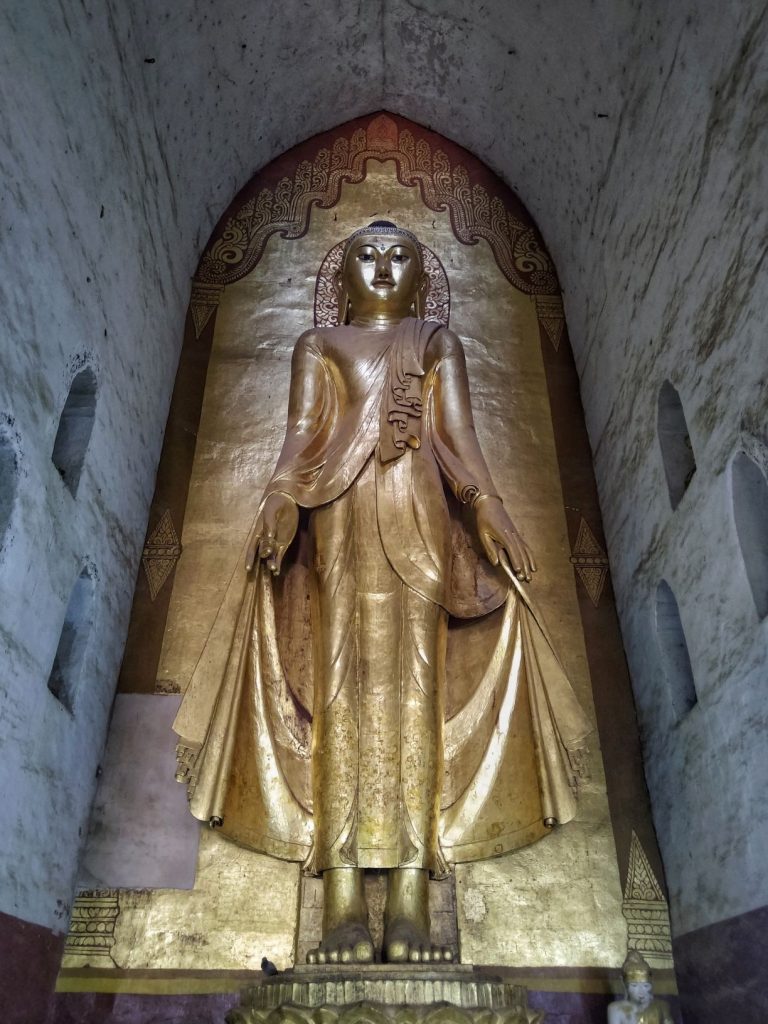
Take the statues in from all angles and you’ll see different expressions on the Buddha’s faces. Walk outside to the rear of the Ananda Phato and you’ll find a bit of tranquillity, away from the Myanmar hawkers peddling their wares around the other side.
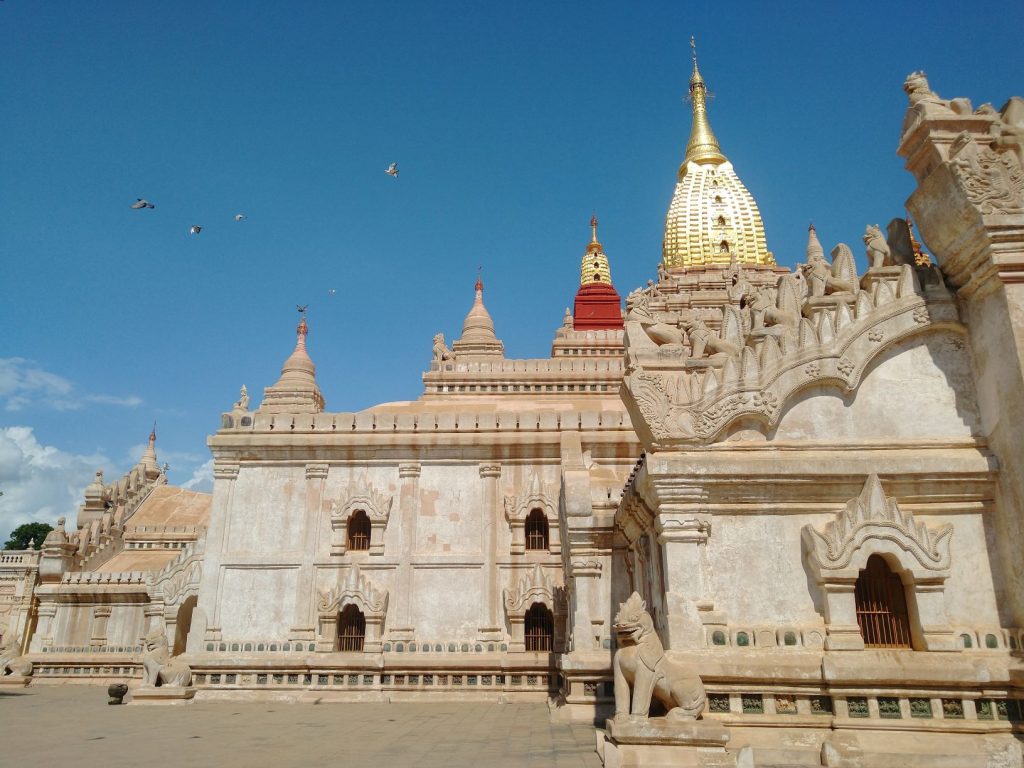
Bupaya Pagoda
With a decent section of temples in this area explored, make a five minute journey to Bupaya Pagoda on the Irrawaddy River. Dating back to the third century, it’s allegedly the oldest construction in Bagan. That is until you discover it’s actually a renovation. The original Bupaya Pagoda was actually destroyed by an earthquake back in 1975. Still, it makes for an interesting and quick visit on your way south to Manuha Phaya.
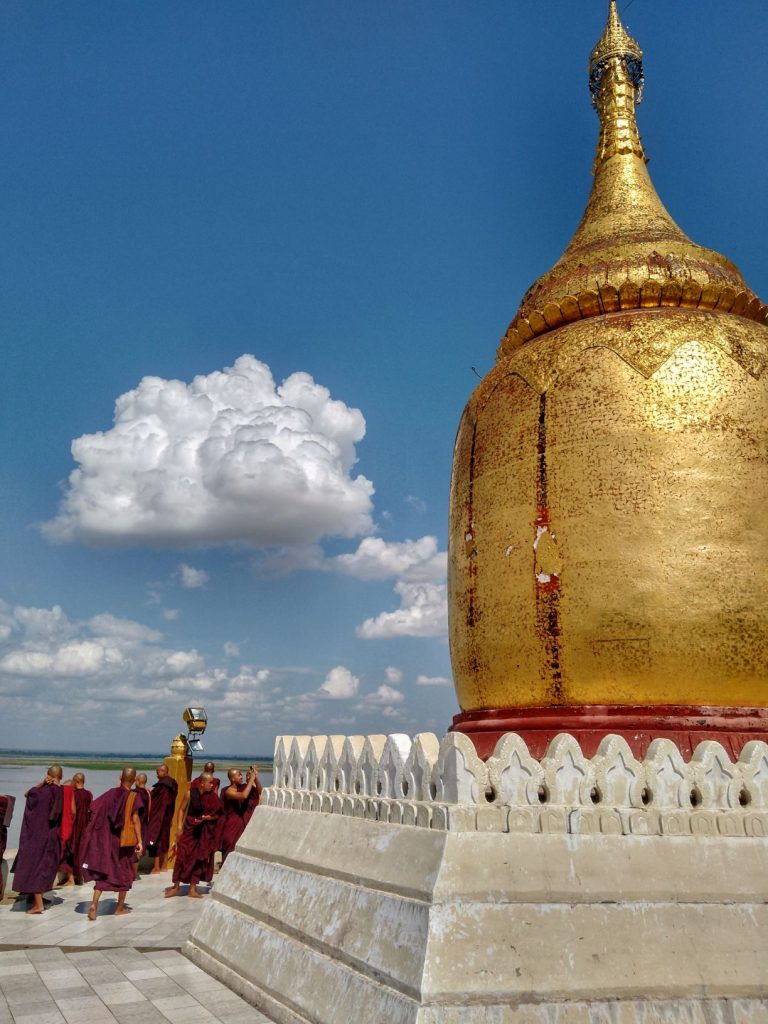
If you wish to take a boat trip from Bupaya Pagoda, it’s possible to book it here for approximately 30,000 Kyatt ($20.50 USD). However, this is only advisable if you have more than one day to spend exploring Bagan. The boat will take you across the Irrawaddy River to Tan Kyi Village. There you can hike to Tan Kyi Pya; a huge gold stupa on top of a mountain. The views are said to be incredible, but it’s a four hour round trip, so plan your day accordingly .
Manuha Phaya
Remember the story about Manuha, the King of Thaton? He was held captive here, hence the name Manuha Phaya. Inside are three enormous Buddhas, all cramped in by the surrounding walls. The story goes the statues cramped conditions reflect those in which Manuha was held.
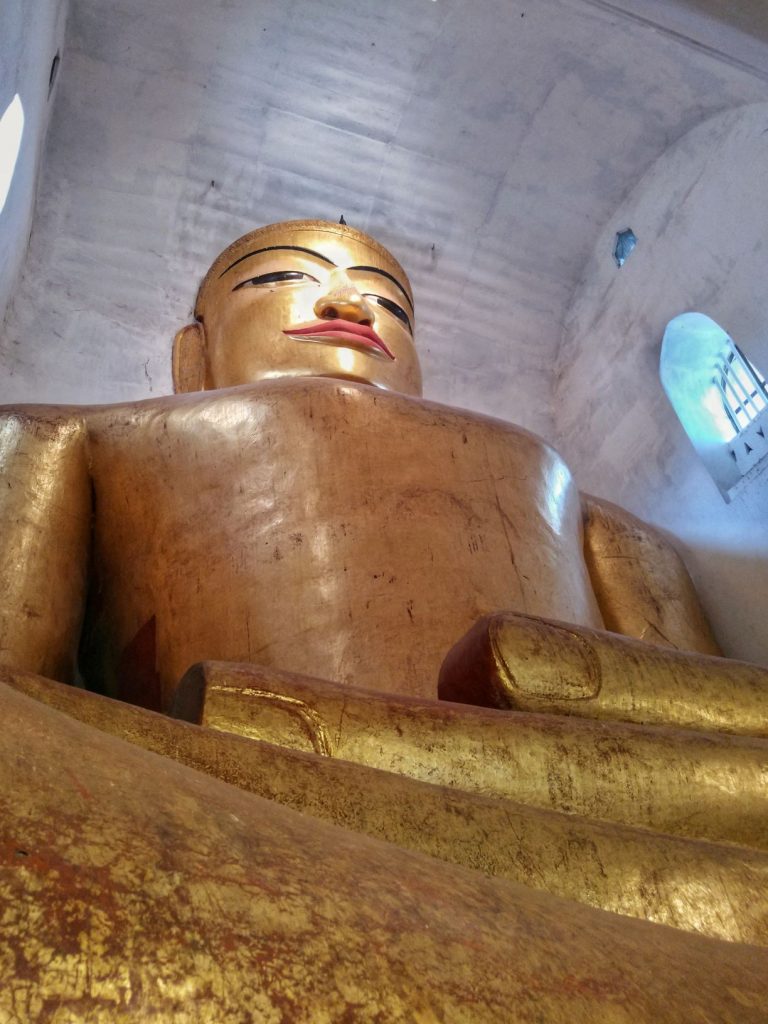
After visiting Manuha Phaya, it’s ideal to take a break. There’s plenty of restaurants nearby, or you can head back to Nyang U. After lunch we set out again.
Shwezigon Pagoda
Located in the Nyaung U area of Bagan, Shwezigon Pagoda houses four 13 feet high original bronze Buddha statues. It’s Nyaung U’s main religions site, but the sheer number of hawkers heckling visitors can be off putting. Even if you don’t linger for long, the Chinthe (large lion like creature) statues guarding the entrance are worth seeing.
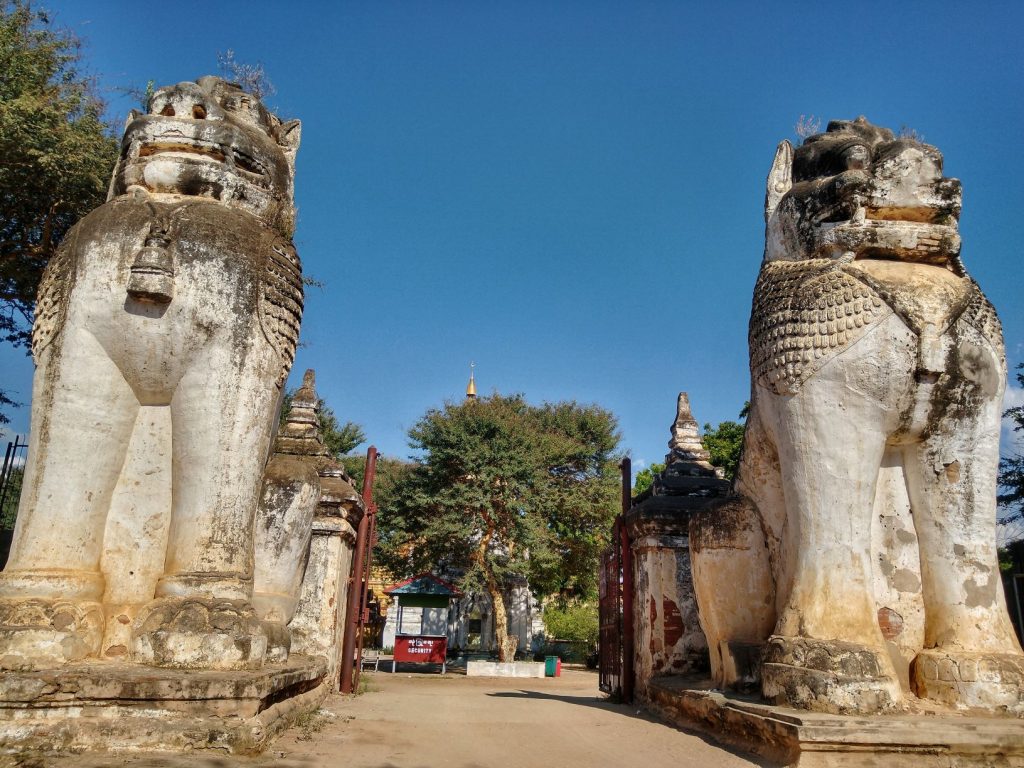
Discovering Bagan’s Lost Temples
Whilst making our way over to Dhammayangi Temple, I decided to take what looked like a shortcut. We rode across narrow paths through a field, hoping to come to a clearing. The clearing never appeared, just a large leafy hedge blocking our way. Instead of turning back, we dropped the kick stand on the e-bike and set off to explore the temples ahead. With no one around, it felt special. Although there’s a lack of signs, I believe this was Gubyauk (if you want to visit yourself).
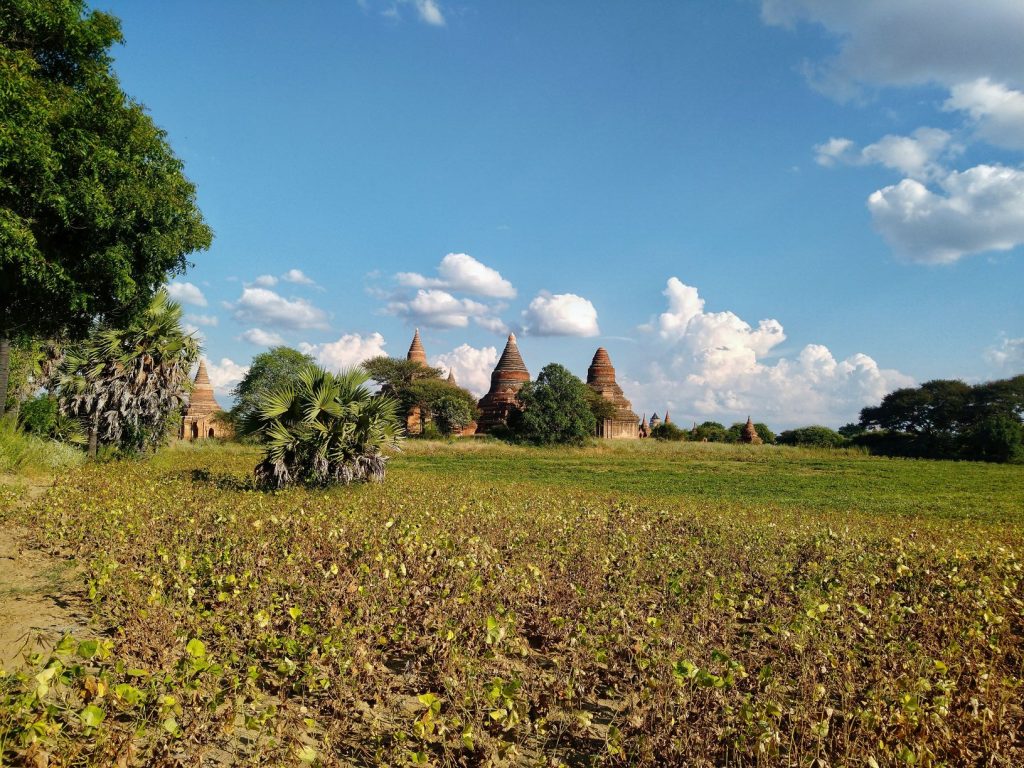
Dhammayangi Temple
One of the bets preserved temples in Bagan, rumours suggest Dhammayangi Temple was left alone due to its dark history. Many of the inner passageways are blocked up and nobody knows the secrets stored inside. During the 11th Century, King Narathu ascended to power after murdering his father and brother. He even killed his wife in cold blood. Dhammayangi was built as a reparation for what he had done, but things only got worse. Narathu was so meticulous about the temple’s construction that if any part didn’t meet his approval, the workers’ arms were chopped off. The stone on which arms were severed is still inside, but what lies buried in the walls, no-one knows. In 1170, Narathu was assassinated, putting an end to his reign of terror.
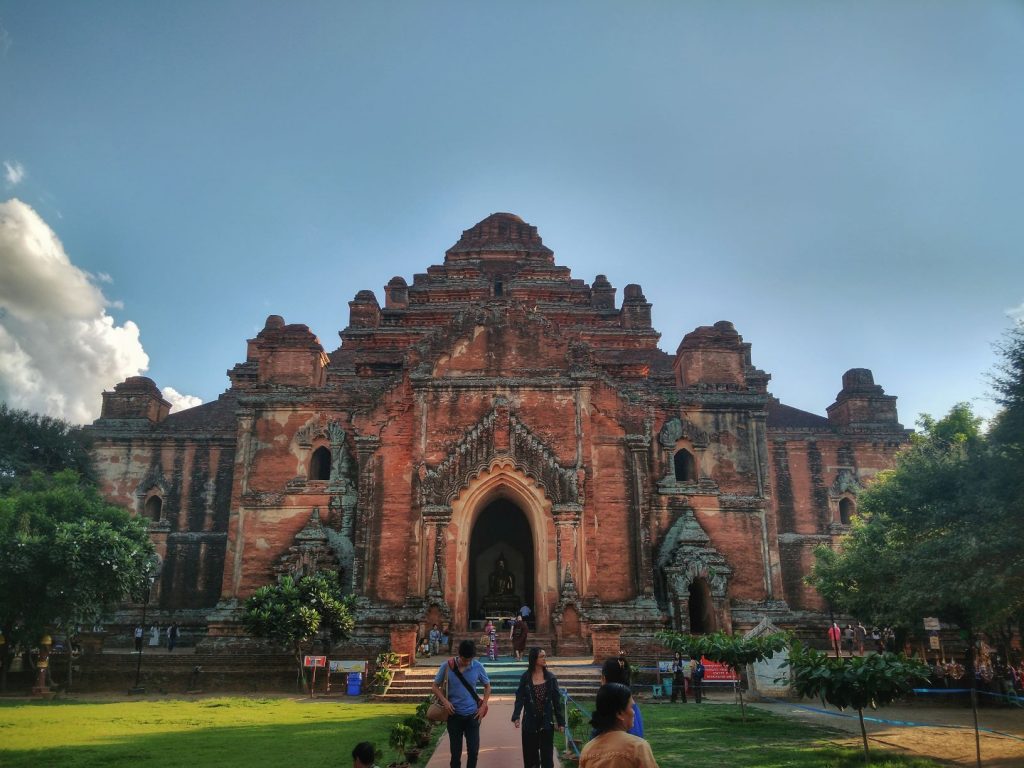
Dhammayazika Paya
A mile south of Dhammayangi along dusty country roads is Dhammayazika Paya. Truly one of the best preserved temples, it’s surround by beautifully maintained gardens. This is a stark contrast to anywhere else in Bagan. Ascend short steps to reach a well maintained concrete path circling the outside. This offers close up views of the five small temples surrounding Dhammayangi.

Where to go for the best Bagan Sunset in 2020
By this time we needed to go to the best place to watch the perfect Bagan sunset. In 2020 the rules changed and you’re no longer permitted to climb temples. Someone even died doing this. Forget heading to the once famous Shwesandaw Pagoda! Out of date guides will tell you to go to Shwesandaw Pagoda, but without the possibility to ascend its steps, you won’t get a good view of the Bagan sunset.
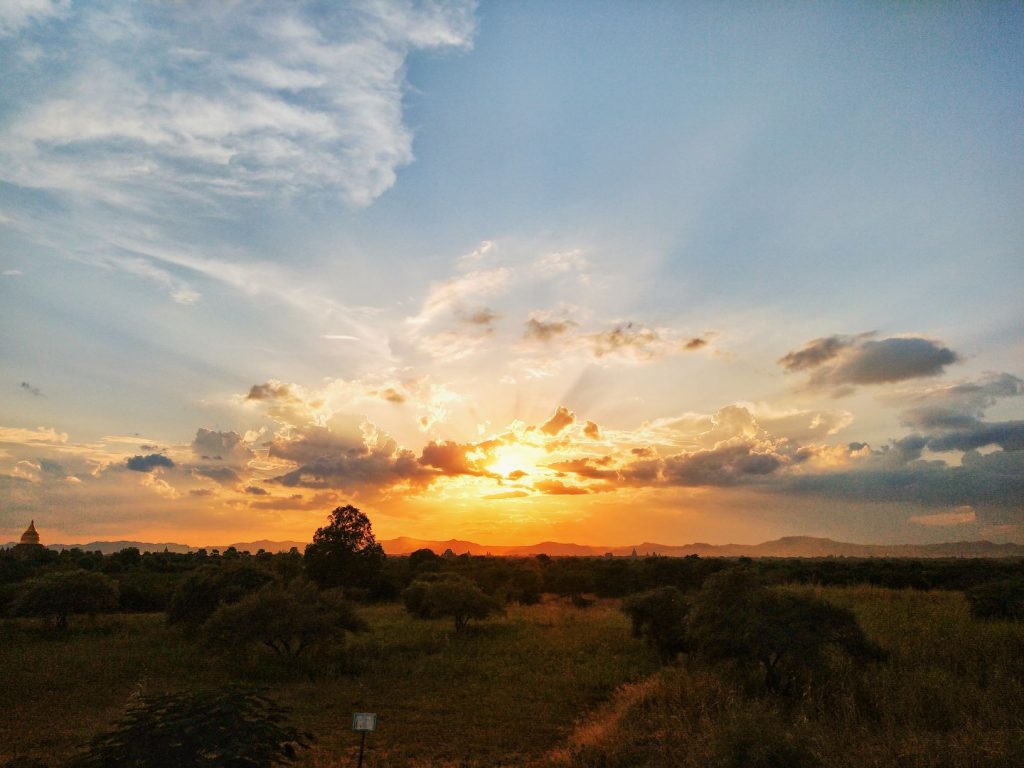
On the map below you can see a spot called ‘Sunset Hill’, around 1.5km from Dhammayazika Paya. Its name is a give away! This is the perfect spot to watch the sunset over Bagan. Sunset Hill is as high as you can get without climbing a temple and gives clear uninterrupted views across the plains. With dust rising in the air and the sun going down behind the mountains, it’s a perfect place wind down and end your day. I didn’t want the day to be over though, so decided to head off across the plains to Shwesandaw Pagoda before it got too dark. .
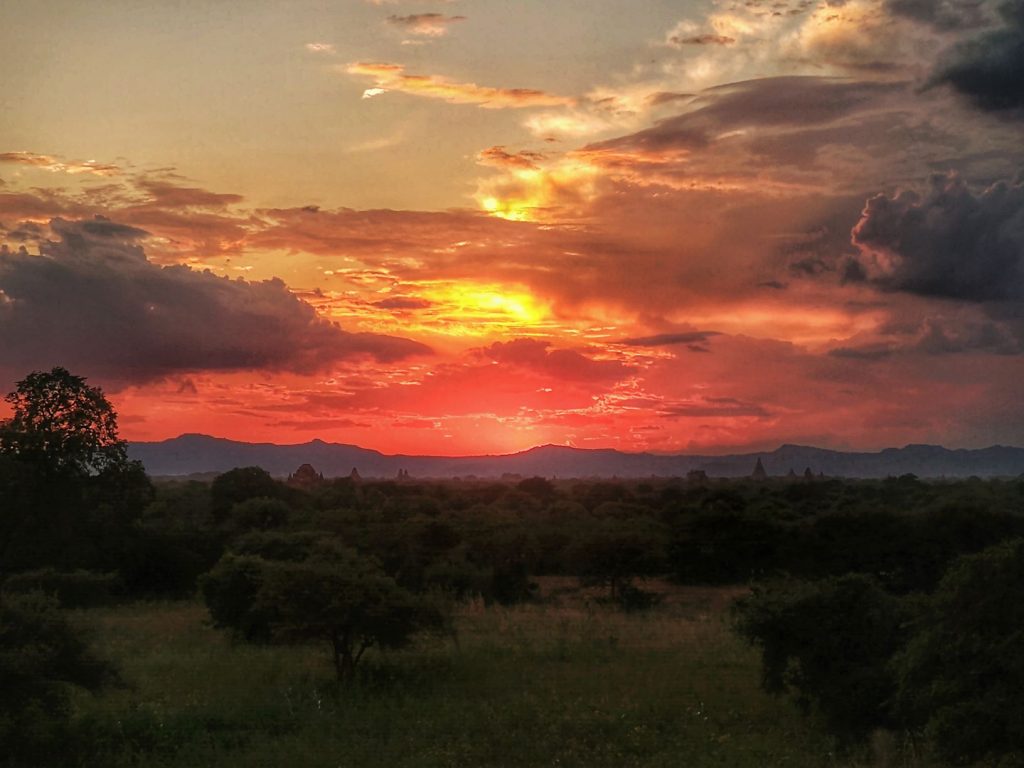
Shwesandaw Pagoda Sunset
One of the most famous and photographed temples in Bagan is Shwesandaw Pagoda. This used to be the perfect place to watch the Bagan sunset. Yet since authorities closed access for climbing, that’s no longer the case. It isn’t possible to ascend the steps as the sun goes down and you’ll find yourself in a lot of trouble if you try it. What you can experience though is the spectacular 328 feet high stupa, topped with a hti (ornamental spire).

Opposite Shwesandaw Pagoda is the Shinbinthalyaung temple. It houses an impressive 70 feet long reclining Buddha, surrounded by ancient murals.

By now the sun had set and we found ourselves in darkness. The sky only illuminated from the Pagoda’s lights. It was time to head back to our hotel, relax and take in the incredible experience of exploring Bagan.
All you Need to Know to Visit the Bagan Temples in Myanmar
Cost of the Entrance Fee to Bagan
To enter Bagan there is a formal ‘Archaeological Zone Tourist Fee’ of 25,000 Kyatt ($17 USD). You’re given a ticket and may be required to show it at the more popular temples. However…we didn’t end up paying anything. Before thinking we had a scam going, let me explain. It was my understanding that you pay a fee at any of the major temples. This is not actually the case and no officials ever asked for a ticket at the temples. I was a little confused. It transpires that there are kiosks outside of town and you to pay the fee at one of them. Our taxi drive sped away from the the bus station and dashed in to town. He never stopped at a kiosk and I think this is why we avoided paying the fee. Sadly only 2% of the ticket fee goes to the maintenance and restoration of Bagan. The rest is pocketed by the Myanmar government. If you arrive by plane, the Archaeological Tourist Zone Fee is collected at the airport.
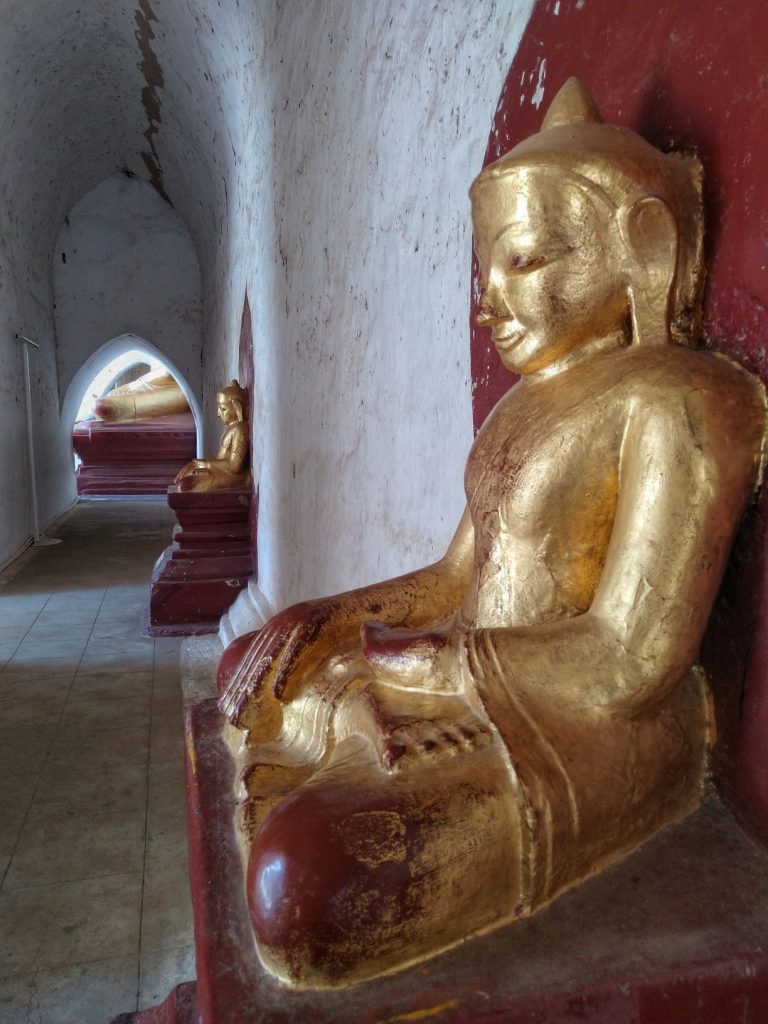
Getting to Bagan (Nyang U)
By Bus
Bagan is easy to reach by bus from any of Myanmar’s major towns and cities. For example Yangon (10 hours and 16,000 Kyatt / $11 USD), Mandalay (six hours and 10,000 Kyatt / $7 USD) and Inle Lake. Your hotel will nearly always be able to book you a seat for the bus journey. They don’t add much commission and you’re usually picked up directly from the hotel and taken to the bus station. In Myanmar, this is very often far out the way of the city. It’s worth noting that buses for Bagan arrive at Nyang U which is located 5km south of the town. To reach the town of Nyang U, you’ll need to haggle with a taxi driver to get the correct fare of 8,000 Kyatt ($5.50 USD). If staying in Old Bagan, you can expect to pay 12,000 – 16,000 Kyatt ($8 – 11 USD) for a taxi.
By Plane
There is an airport at Nyang U and daily flights leave major cities in Myanmar. I always recommend using Sky Scanner to search for flights. It’s an easy to understand web-site and nearly always has the lowest prices. Open it in an Incognito window so cookies don’t get stored on your computer. This ensures airlines don’t increase the price when you go back to visit the web-site. A taxi from the airport to Nyang U wil be in the region of 10,000 Kyatt ($7 USD) and a bit more to Old Bagan.
Where to stay in Bagan
The entire Bagan complex is too big to explore by foot. The majority of temples are spread between Nyang U in the east and Old Bagan in the west. You’ll either be hiring a bike or taking a tour, so where you stay doesn’t matter too much. Nyang U is the best place to stay if you’re on a budget. There’s a wide mix of accommodation, lots of places to eat that cater to all tastes, shops and ATMs. Old Bagan is more upmarket, with luxury hotels and higher accommodation costs. New Bagan strikes a balance between these two places.
Nightlife in Bagan
Bagan isn’t a party town and nowhere has much in the way of proper nightlife or clubbing. If you fancy a couple of beers to wind down at the end of the day, Nyang U is the place to get your fix.
How to explore Bagan in Myanmar
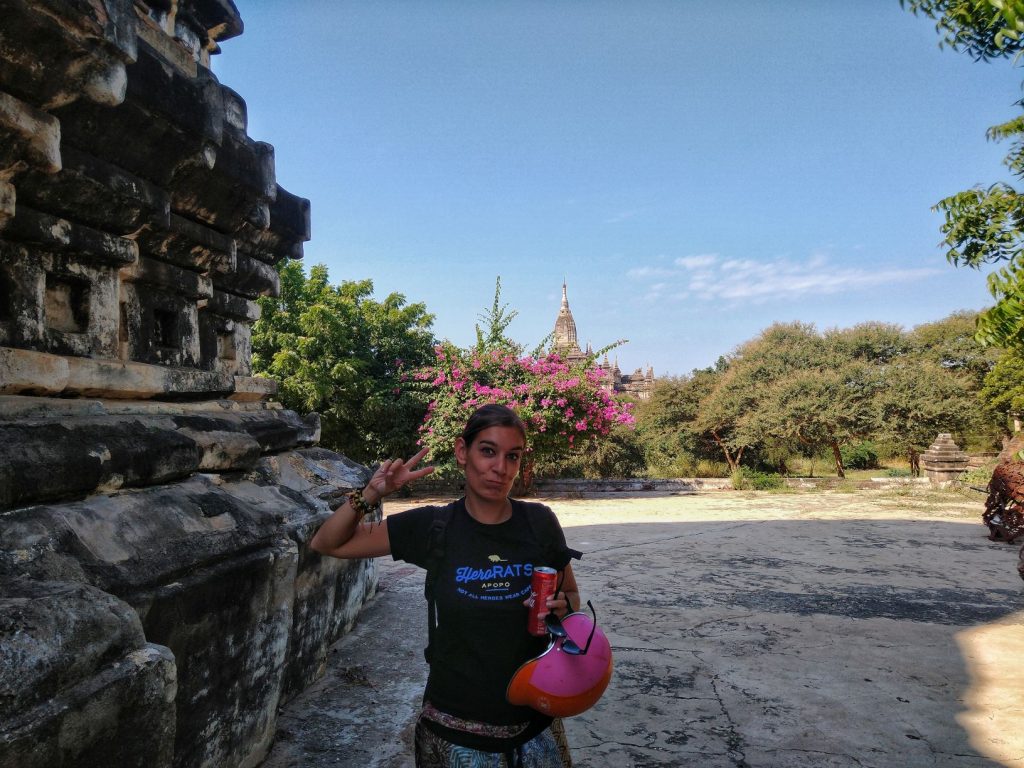
Bagan is easy to visit without a tour and the best way to explore the Bagan temples is on an e-bike.
E-bike
The heat can get pretty intense, but as an e-bike doesn’t require you to pedal. You can just let the breeze blow through your hair, rather than get a sweat on. Your accommodation will be able to hire you an e-bike, either directly from them or through a local supplier. The price for the day should be in the region of 10,000 Kyatt ($7 USD) per day. Check the bike thoroughly before you set off as breakdowns or empty batteries are common. In Myanmar, the tourist infrastructure isn’t maintained in the same way as back home. With an e-bike it’s easy to get off the main roads and in to the fields. However, this can be dusty and the ground can is bumpy. Go slow if you plan to do this. You don’t want to damage yourself or the e-bike. Batteries on e-bikes should last around eight hours on a full charge. This is enough for you to travel far and wide. You can get two people on one e-bike, so this is a good way to save money if you’re on a tight backpacker budget.
Bicycle
Bicycles are also available. Again, these can be hired through your accommodation or in the town. The cost should be around 6,000 Kyatt ($4 USD) per day. Check the brakes, tyres and seat adjustments before setting off. It’s not uncommon for bikes in Myanmar to have rusted or non-working brakes!
Tuk tuk
Another option if you like to have things planned for you is to hire a tuk tuk driver. One will find you on the street and you can barter a price, but again, your hotel can arrange one for you. This can be a good option as you have the trust of your hotel to get a decent service. The price should be in the region of $25 USD for the day. The driver can take you to see the main highlights, or you can tell them which temples you’d like to see. The drivers may speak good or very little English and can drop you off or give you more a formal historical tour. Check hat you’re getting before deciding who to go with.
Taxi
It’s possible to explore Bagan in a taxi and the cost will be around $35 USD. The drivers usually speak good English and can either drop you off at different temples, or give you a full historical tour. If you hire a taxi through your accommodation it will likely cost more. Although again, you have the peace of mind that they’re trying to keep standards high.
Horse and Cart
You can hire a horse and cart to explore Bagan and it will cost 25,000 Kyatt ($17 USD). This might seem like some sort of fancy old world colonial extravagance, but please don’t do it. Horses aren’t always looked after and the heat can be unbearable for them. By hiring a horse and cart you can end up supporting the mistreatment of animals. This is not cool!
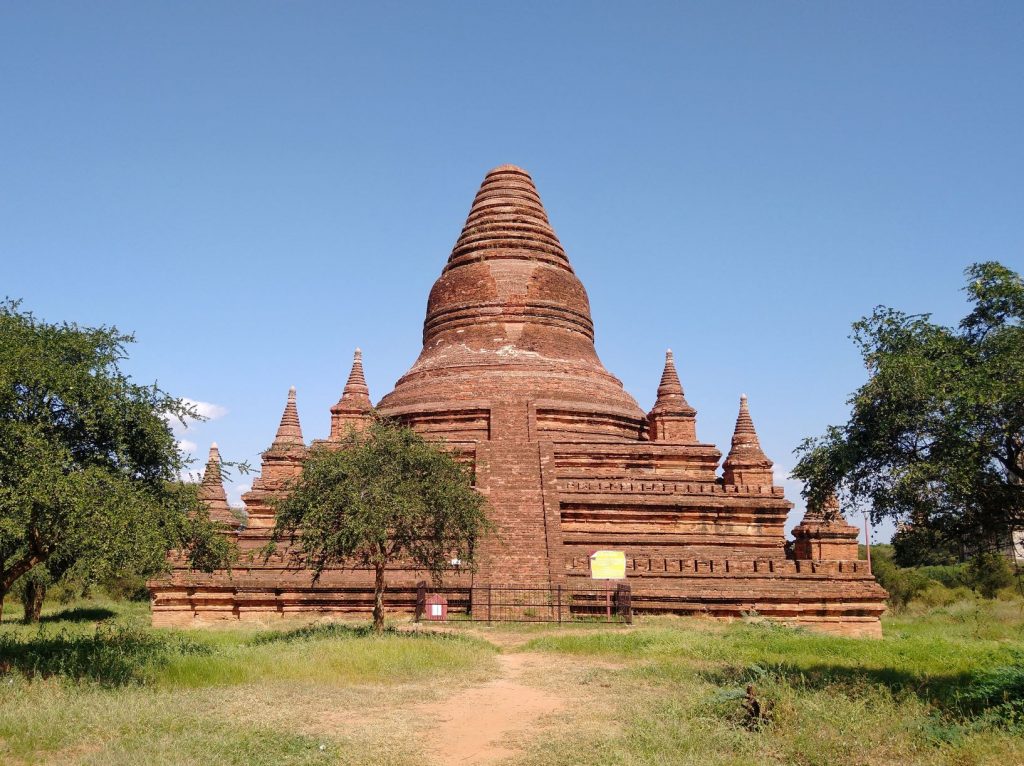
Balloons Over Bagan
You’ve seen the classic photos. A balloon floating blissfully over the Bagan temples as the sun rises. For many this is the ultimate Bagan experience, but it comes at a price. Several companies offer trips in a balloon over Bagan, but prices range from $330 – $400 USD per person. No, that’s not a typing error. You’re picked up from your hotel and given breakfast, souvenir photos and sparkling wine on landing. As I didn’t take flight, I can’t say which is the best balloon over Bagan tour operator. Balloons Over Bagan, Oriental Ballooning and Golden Eagle are all well known and worth enquiring with.
How much time to spend at the Bagan temples?
I believe that one day is enough to explore Bagan. You can cover a lot of ground and exploring for one day keeps the magic alive. If I were to spend two or three days exploring, I would feel ‘templed out’. Of course, you can spend as long as you like, but don’t worry if you only have the time to spend one day. It won’t be a wasted trip.
Essential Items for Your Trip to Bagan
It’s always useful to have a guide that helps you plan your travels. The Lonely Planet Guide to Myanmar (Burma) is ideal. Also available as Kindle.
The Rough Guide to Myanmar (Burma) is also an exceptional travel planner. Also available as Kindle.
I have taken one of these across the world. This power strip is essential for international travel. It charges multiple items at once and takes any kind of international plug. Perfect if you’re in a hostel dorm with limited plug sockets or have a lot of tech to charge.
You’ll need sun cream to fight against Myanmar’s scorching sun. I recommend an eco friendly reef sun cream. This means if you also use it to go swimming, you won’t be harming the underwater environment and animals. You won’t get burned either!
Save the environment and stay hydrated with a bottle that filters your water. This is ideal for travelling overseas where people don’t have the luxury of potable tap water. It will mean you don’t get sick or use a lot of non-recyclable plastic.
Get the best value accommodation in Bagan here:
SHARE OR PIN THIS POST
